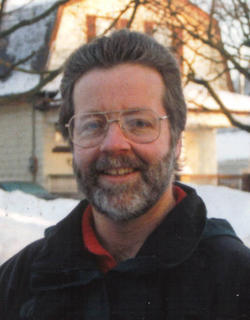 "The Black Echo", Michael Connelly's debut novel and LAPD Detective Harry Bosch's premiere appearance to a grateful reading public, opens with Bosch being assigned to what is supposed to be a pro forma investigation. A "hype", a derelict drug addict, has been found dead of an apparent heroin overdose in a drainage pipe. The expectation is that a routine report would be filed and that would be that. But within moments of crawling into the pipe to examine the scene, Bosch begins to spot details that don't fit the accidental overdose scenario. More than that, Bosch is surprised to learn that he knows the deceased - Billie Meadows, a fellow "tunnel rat" veteran from Vietnam.
"The Black Echo", Michael Connelly's debut novel and LAPD Detective Harry Bosch's premiere appearance to a grateful reading public, opens with Bosch being assigned to what is supposed to be a pro forma investigation. A "hype", a derelict drug addict, has been found dead of an apparent heroin overdose in a drainage pipe. The expectation is that a routine report would be filed and that would be that. But within moments of crawling into the pipe to examine the scene, Bosch begins to spot details that don't fit the accidental overdose scenario. More than that, Bosch is surprised to learn that he knows the deceased - Billie Meadows, a fellow "tunnel rat" veteran from Vietnam.From the opening paragraphs of the novel, Connelly's magnificent story-telling introduces the reader to Bosch's dark, troubled persona and his now familiar investigative style - doggedly picking at the unhealed scab of tiny details that don't fit, skillfully peeling away the layers of deceit on an onion that doesn't smell quite right until the kernel of truth at the centre lies exposed. In this case, Bosch quickly finds police records showing that Meadows was a prime suspect in a major bank robbery that fell under federal jurisdiction. Even though he is assigned to work with FBI Agent Eleanor Wish, their obvious reluctance to share information on the details of their investigation into the bank heist has Bosch smelling a rat! And finding the rat - trailing that rat from present-day Los Angeles to 1974 Saigon, into the jungles of Vietnam and back - the rat he knows is on the inside of either LAPD or the FBI, proves elusive indeed until Bosch makes his way past the final turn of this complex maze of subterfuge.
The dark underpinnings of Bosch's meticulously crafted complex character start here - his disdain for authority; his unwillingness to fit the mould of the "police family"; the troubled nature of a psyche that is undoubtedly all too common in Vietnam veterans; his fear of surrendering to an unconditional love; the disturbing family history that began with his birth to a hooker who was subsequently murdered and his childhood travails at the hands of government agencies; the surprising extent of Bosch's visceral reaction to the murder of a street punk. Pathos is presented without pity or despair and Bosch emerges a very real and very human police officer indeed.
Much of this ground will be familiar to veteran Bosch fans but "The Black Echo" will serve to bring an even deeper level of understanding to his motives and his conduct. For those that have yet to savour Connelly's brilliant creation and his mastery of the police procedural genre, "The Black Echo" is definitely THE place to start.
Highly recommended.












